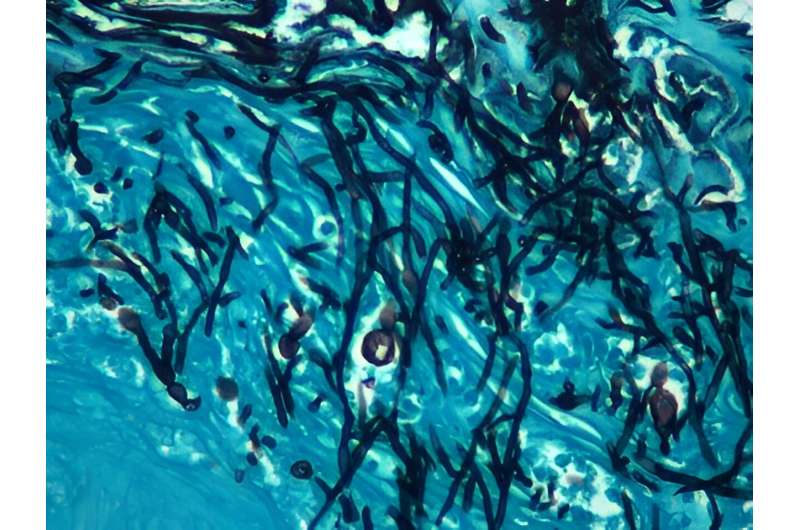

A study that assesses the effects of hypochlorous acid (HOCI), commonly known as bleach, as it is generated during the immune response of a cell (phagocytosis) when fighting a common fungal pathogen, Candida albicans, reveals that HOCI is a potent killing agent.
The laboratory finding, highlighted in a paper published in the journal mBio, also uncovers some of HOCI’s mechanisms of action in that killing process. The work could be a significant step toward using HOCI as a novel therapeutic strategy against C. albicans, and potentially other pathogens.
C albicans causes much infection worldwide. It is particularly virulent in immunocompromised patients and is the cause of dangerous systemic infections in this population. There have been many effective treatments against the fungal pathogen, but for decades drug resistance has been problematic when treating infections cause by C. albicans.
Most studies looking at this immune response against the fungal pathogen have focused on hydrogen peroxide (H2O2), not HOCI. Phagocytes capture the fungal invader and in the process two oxidants are created—H2O2 and HOCI. Myeloperoxidase converts H2O2 created during the oxidative burst in the phagosome into HOCI, the more potent killing agent.
“We discovered that hypochlorous acid kills cells by targeting the plasma membrane and oxidizing cellular components in a very different way than hydrogen peroxide,” says James Konopka, Ph.D., lead author and Professor in the Department of Microbiology and Immunology in the Renaissance School of Medicine at Stony Brook University.
“It disrupts the C. albicans plasma membrane, produces a very different transcriptional response than hydrogen peroxide, is more effective and disruptive to the plasma membrane, and therefore has a more distinct effect on killing these fungal cells.”
Konopka explains that neutrophils are the critical cell type for controlling infections by C. albicans and other fungal pathogens. They are distinct because they make high levels of myeloperoxidase compared to other phagocytes, such as macrophages. This study shows the important aspect of the neutrophil response, essential to the oxidative process that produces this fungal-killing HOCI or bleach.
While the laboratory results will not have any immediate impact on new treatments against C. albicans infections, Konopka believes the findings provide a basis for designing new therapeutic strategies against this pathogen that causes infections worldwide.
More information:
Lois M. Douglas et al, Candida albicans resistance to hypochlorous acid, mBio (2023). DOI: 10.1128/mbio.02671-23
Journal information:
mBio
Provided by
Stony Brook University
Citation:
Could our body’s ‘bleach’ be key to fighting a common fungal pathogen? (2023, December 4)
retrieved 4 December 2023
from https://phys.org/news/2023-12-body-key-common-fungal-pathogen.html
This document is subject to copyright. Apart from any fair dealing for the purpose of private study or research, no
part may be reproduced without the written permission. The content is provided for information purposes only.





